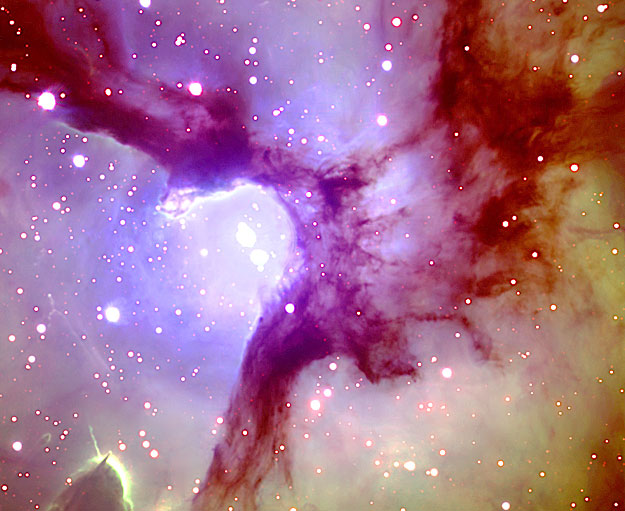I banged your mother for three days straight before you were concieved. On the last half of the second day, she found some other guy, and he was your father!

Also, they could be large asteroids or something that are knocked out of the asteroid belt to a neighboring star.
Then again, I'm rusty when it comes to astronomy.
Afterwards, the gasses flow real nice.
But like, Really? 
Back to breeding, infidels. We need more workers for the pudding vats!

quote:
This insanity brought to you by JooJooFlop:
They're sneezed into existence.
AHHHH! We're living on a snotball!



sigpic courtesy of This Guy, original modified by me
Life begins and ends with the penis.

Well, thats one way of looking at it...

quote:
From the book of King Parcelan, chapter 3, verse 16:
Bullshit.Life begins and ends with the penis.
I get the beginning, but the end?




This is a picture of the Trifid nebula. It is one of many billions upon billions of nebulae like it.
It is a stellar nursery. Over many billions of years, gravity causes the gasses of the nebula coalesce into newborn stars, which are the points of light you see in the picture. These newborn stars are bit like our sun, and a bit like titanically massive gas giants like Jupiter. They aren't nearly as dense as our sun at first, but as the stars mature in to full-blown fusion reacting suns, they beging to develop extremely powerful gravitic fields and to give off large amounts of energy.
The energy and gravity combine to cause the star's outer layers to form planets. The gasses closest to the star are compressed the hardest, becoming solid rock-based planets. The further out they go, the less dense and generally more massive the planets become.
Often times larger planets will form thier moons in the same way a star formed the planet. Our moon is an exception, and is suspected to have once been a part of the earth that broke off while the earth was still being formed.
quote:
Ja'Deth Issar Ka'bael had this to say about Duck Tales:
Khyron's got it right. Generally the central point that the gases and such swirls around is called the nucleus, if you want to get technical. There was at one time a theory that Earth's moon more or less materialized in space over time, but now a lot of astronomers think it was created by a counter-swirl/second nucleus created as Earth was settling (we know the Moon is younger than the Earth, but the old theory was that for some reason things formed in orbit around the Earth without getting pulled in).
Another theory is that the young Earth was almost destroyed by a planetoid crashing into it, and that a big molten chunk came off. If that is so, lucky it wasn't bigger, or there'd be another asteroid belt.


sundays are a bitch to think on

quote:
Reynar wrote this stupid crap:
Nebula are what's left over after a star goes supernova and wastes a solar system or galaxy. It's possible for them to form something new, but they usually end up burning themselves out after many millions of years.
Actually that's only half true.
An emission nebula like NGC3603 is the result of a nova or supernova, and your comment applies to them only because the universe simply isn't old enough for any emission nebula to have formed many new stars.
However, there are also star-forming nebulae like RCW38 pictured here that are veritable hotbeds of star-forming activity.
But..
When two planets really love each other, the hook up, do the nasty and tada, new planet.
